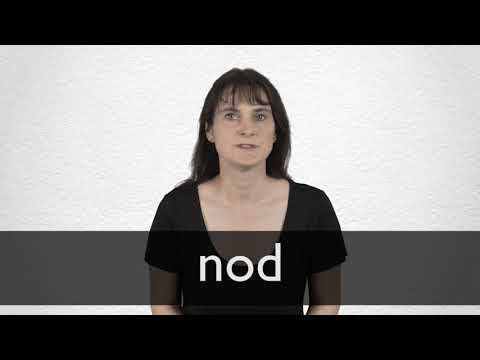In the realm of human interaction, communication stands as the cornerstone of our connections, relationships, and societal structures. However, beyond the spoken words lies a fascinating aspect of communication – nonverbal cues. Among these, the nod holds a particularly intriguing place. Universally recognized yet culturally nuanced, the nod is a subtle yet powerful gesture that traverses linguistic boundaries, conveying agreement, understanding, affirmation, and myriad other sentiments. In this exploration, we delve into the multifaceted nature of the nod, examining its significance, variations across cultures, and its profound impact on interpersonal dynamics.
The Universality of Nod
The nod, a simple gesture involving a downward and upward movement of the head, is recognized across diverse cultures and societies. It serves as a nonverbal affirmation, indicating consent, acknowledgment, or comprehension. From the bustling streets of New York City to the serene landscapes of rural Japan, the nod transcends geographical and cultural barriers. Its universality underscores its innate human significance, emphasizing shared emotional and cognitive experiences among people worldwide.
The Dynamics of Nod in Communication
Within the realm of communication, the nod plays a pivotal role in facilitating understanding and rapport. It acts as a form of feedback, providing immediate validation or agreement to the speaker. In conversational settings, nodding signals active listening, encouraging the speaker to continue while fostering a sense of connection and engagement. Moreover, the nod can function as a silent cue, guiding turn-taking in dialogues and group discussions, ensuring smooth and harmonious exchanges.
Cultural Variations in Nodding Behavior
While the nod maintains a universal essence, its interpretation and usage exhibit intriguing cultural nuances. In some cultures, such as Western societies, nodding typically signifies agreement or affirmation. Conversely, in Eastern cultures like Japan, the nod may connote politeness, respect, or acknowledgment, often accompanied by a subtle bow. Understanding these cultural subtleties is crucial for effective cross-cultural communication, as misinterpretations can lead to misunderstandings or perceived disrespect.
The Psychology Behind Nodding
From a psychological perspective, nodding influences both the sender and receiver of the gesture. For the nodder, the act of nodding can enhance feelings of empathy and understanding, fostering a sense of connection with the speaker. Conversely, for the recipient, observing nodding behaviors can evoke feelings of validation and affirmation, reinforcing their message’s impact. Moreover, studies suggest that nodding may activate mirror neurons in the brain, promoting empathy and rapport between individuals.
Nodding in Professional Settings
In professional environments, the nod serves as a valuable tool for effective communication and leadership. Leaders who nod attentively during interactions convey openness, empathy, and respect for their team members’ contributions. Likewise, employees who nod in agreement during meetings signal engagement and alignment with organizational goals. Harnessing the power of nodding can cultivate a positive and collaborative work culture, enhancing productivity and teamwork.
Nodding in Social Dynamics
Beyond formal settings, nodding influences various aspects of social dynamics and relationships. In social gatherings, nodding fosters camaraderie and mutual understanding among participants, facilitating lively and enriching conversations. Additionally, nodding plays a crucial role in interpersonal attraction, as individuals who nod frequently are perceived as more approachable, empathetic, and likable by their peers.
The Role of Nod in Technology-Mediated Communication
In an era dominated by digital communication platforms, the significance of nonverbal cues like the nod remains paramount. While virtual interactions lack physical proximity, digital platforms often incorporate features such as emojis, reactions, and video conferencing tools to emulate nonverbal communication. Leveraging these tools effectively can enhance the richness and authenticity of online interactions, bridging the gap between physical and digital communication modalities.
Conclusion
The nod transcends linguistic, cultural, and technological boundaries, serving as a universal symbol of understanding, affirmation, and connection. Whether in face-to-face conversations, virtual meetings, or cross-cultural interactions, the nod plays a fundamental role in fostering empathy, rapport, and mutual respect among individuals. By understanding the nuances of nodding behavior and harnessing its power in communication, we can enrich our relationships, bridge cultural divides, and cultivate a more inclusive and harmonious society.
